Euskadi - the Basque Country of Spain
Laurie and I have visited Spain on vacations maybe ten times, and on those trips have seen most parts of the country, except two: the area in the southeast, anchored by Valencia, and the Basque Country. I think we’ll get to Valencia someday; on this trip we took care of the Basque Country, with a week-long visit to two of the most important cities: San Sebastian and Vitoria-Gasteiz. Spoiler alert: we liked San Sebastian and loved Vitoria-Gasteiz. Ahora, ¡vamos a España y el pais Basque!
A Little Background on Euskadi — the Basque Country
The Basque Country, known officially as Euskadi because that’s the word for it in the language of the Basques, sits in the middle of Northern Spain, with a portion in the most southwestern corner of France.

Although Euskadi is a part of Spain and France (in Spain, it received a great deal of autonomy in 1978) it is what is known as an “ethno/liguistic isolate;” that is, the people have no DNA connection with any other ethnologic group, and their language has no connection with any other language in the world. It’s as if the Basque people and their language just appeared in the Aurignacian Period, which was from 43,000 to 26,000 years BC. No one knows the origin of the Basques and their language.
This separation from its neighboring cultures meant that the Basques have tried to gain independence from Spain and France for centuries. The fight was particularly powerful in Spain, where in the late-1900s and early-2000s the ETA - a fierce group fighting for Basque independence - waged a campaign that included terrorism against Spanish civilians and officals. The ETA stopped its activities in 2011 and since then the nationalistic fervor has taken a more political form.
Today Euskadi has a fair amount of autonomy (as do several other regions in Spain, achieved after the death of the dictator Francisco Franco in 1975). It has a Parliament that meets in Vitoria-Gasteiz and, although Basques would like complete independence from Spain, they live with the current political situation. After decades of suppression, the language, Euskari, had almost disappeared (Franco made it a crime to speak Euskari) but now it’s coming back, though only about 30% of the Basque Country population speak it today.
All this is to point out that the Basque Country is not like Spain in its culture, its language and its people.
Pintxos
Anyone who has spent any time at all in the Basque Country knows about pintxos. (Pronounced “pin’-chose” — “tx” in the language of the Basques is pronounced “ch” and is used a lot.) Pintxos are, essentially, tapas on steroids. They are bigger, more sophisticated and more plentiful — you’ll find that every bar and restaurant in the Basque Country has quite a selection of pintxos. Though pintxos are meant, like tapas, to be a eaten with a glass of wine before dinner, you’ll see lots of folks who make them dinner: we did almost every night.
The routine for pintxos is: go into a chosen bar, get yourself a place at the bar, which may require some small amount of pushing and shoving, point to what pintxos you want - they’ll be in a glass case the length of the bar - and order a glass of wine (txakoli being the favorite). Pay, move to another bar and repeat until you can eat no more. Or stay in a bar you like and keep trying different pintxos until you can’t try any more. Repeat the next night.
Here are some pictures from a few nights of pintxos in San Sebastian and Vitoria-Gasteiz:
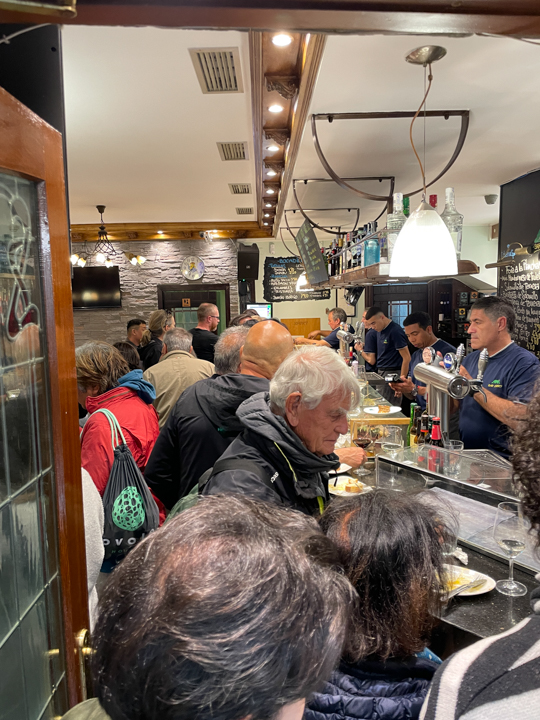
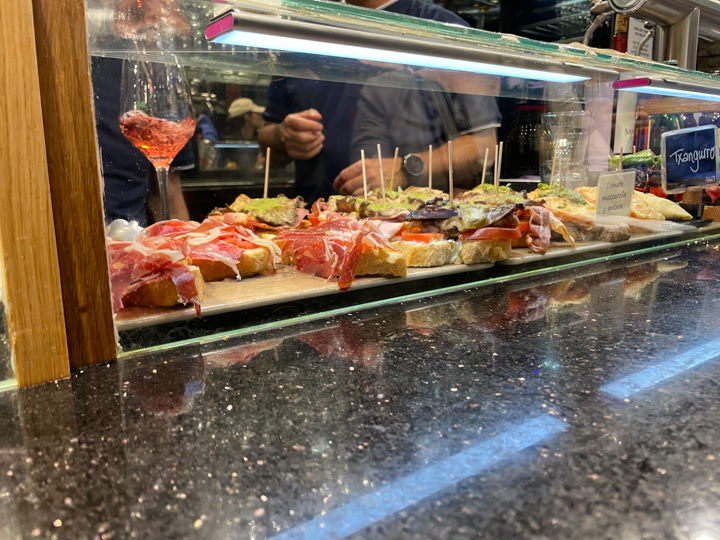
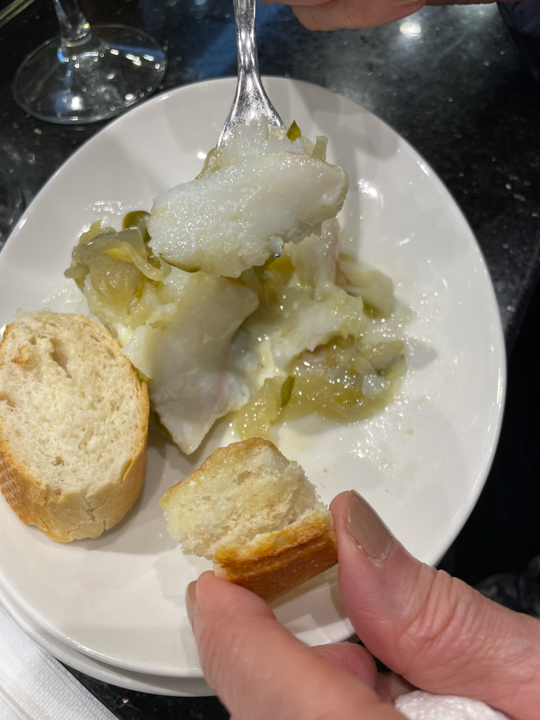
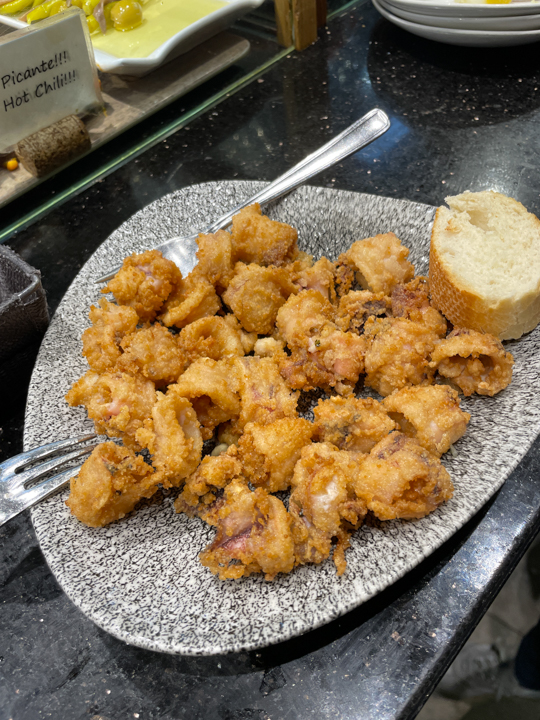
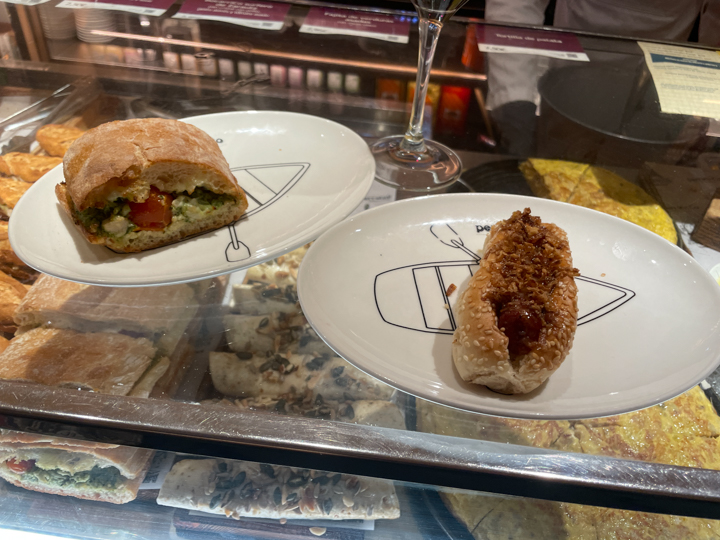
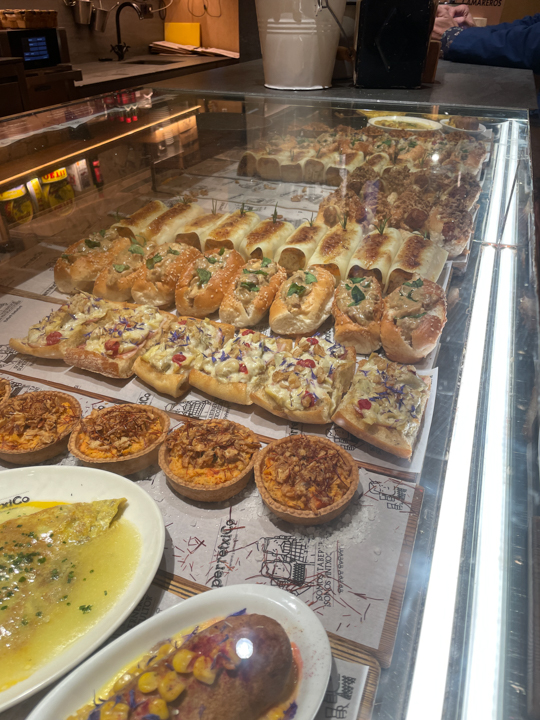
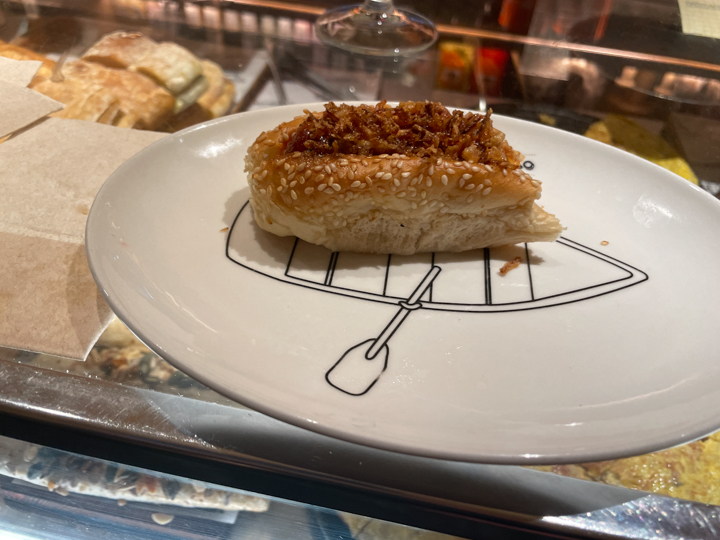
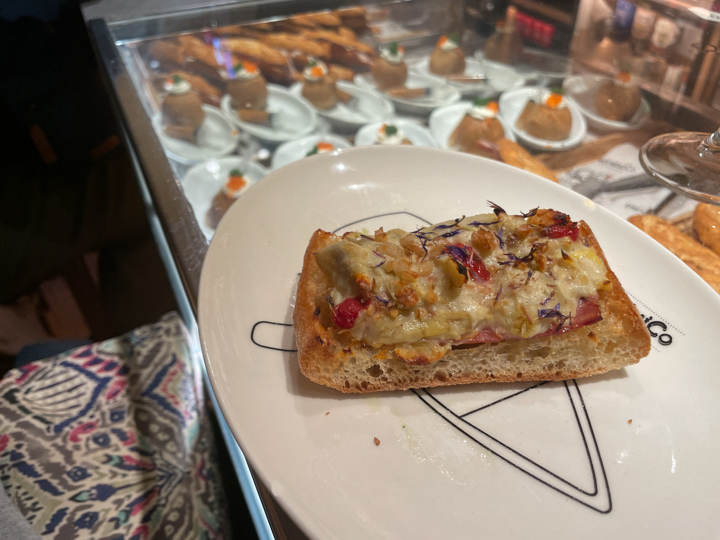
That’s a brief introduction to the world of pintxos. It was great fun to be part of a crowd enjoying them as much as we did. In seven nights in Basque Country, we had one sit-down meal. Other than that, it was pintxos, pintxos, pintxos and will be again when we get back to the Basque Country, and we will get back.